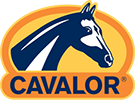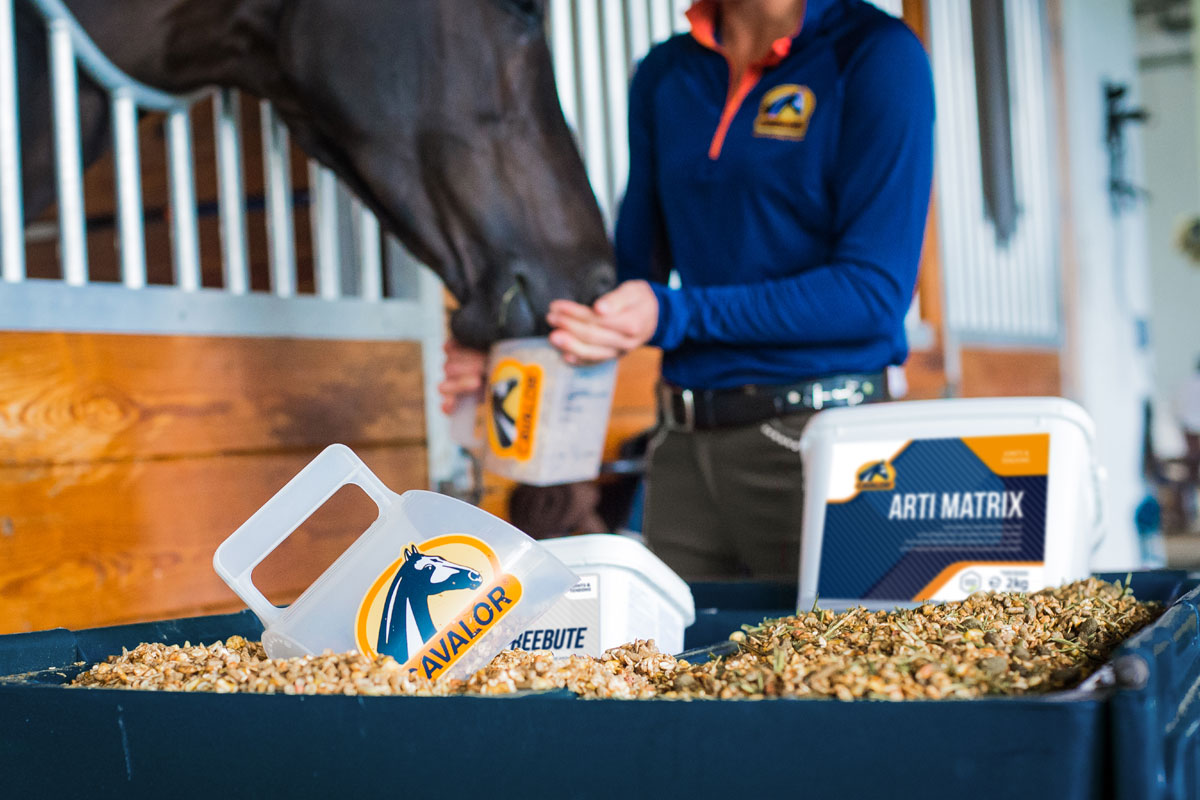Physical activity is important when it comes to optimum fitness. But good nutrition and rest are just as important. Without these, an athlete’s body can suffer from overwork. Sport and rest are inextricably linked. Did you know that you can optimise the effects of your training considerably with the right feed? Sport physiologist Wim van Driessche and Cavalor Feed Consultant Fien Demeyere are experts on equine fitness and muscle development. In this blog article, read about how training and nutrition are connected. At the end of this article you’ll also find a few helpful tips from our feed experts.
What do aerobic and anaerobic mean?
Aerobic energy supply is the process where a horse produces energy through combustion in the presence of oxygen. In aerobic combustion, glucose is broken down into pyruvate and then into carbon dioxide, water and energy. This is called aerobic glycolysis. Aerobic combustion supplies constant, long-lasting energy. Horses use aerobic combustion for activity of light to medium intensity – walking, grazing, light work, dressage, easy cantering.
In contrast, anaerobic combustion is the process in which a horse generates energy without the presence of oxygen. Anaerobic combustion occurs during high-intensity activity when the muscles don’t have enough oxygen to cover energy requirements. In anaerobic combustion, glucose is converted into energy. This process produces energy quickly and cannot be maintained for longer periods. It also involves the production of much more lactate. Anaerobic combustion is primarily used for short, intensive exercise.
The right energy source
Physical effort can be broken down into three areas:
- From zero to the aerobic threshold
- Balanced production and clearance of lactate. The produced lactate is converted into ATP which delivers energy to the horse’s body.This is the basic prerequisite or foundation of fitness.
- Energy sources include sugar and starch, but also fat and fibre.
This zone is used for basic condition training. The more the horse can use fat and fibre as energy sources, the more sugar can be saved for later anaerobic exercise. The most important energy source for this is forage, and fats are also burned during this activity level.
- From the aerobic to the anaerobic threshold
- More lactate is produced in the muscle than is cleared. The body processes the excess lactate elsewhere and delivers additional oxygen.
- The main energy sources are fats and carbohydrates.
This zone is for competitive performance. There should be a balanced ratio of fats and carbohydrates. This balance can come from concentrate feed with added fat, but oils and high-fat balancers are also good energy sources for working in this zone.
- Above the anaerobic threshold
- The muscles produce more lactate than they can clear, and the muscles experience acidosis.
- Main energy sources here are (fast) carbohydrates.
This involves intensive work with short, powerful efforts. The horse burns easily digestible carbohydrates. In this phase, horses need more carbohydrates that can be quickly absorbed. These can be found in cracked grains, which are easier to digest and pose a lower risk of digestive problems and hindgut acidosis.
Nutrition to support training
The dietary fibre in forage is the basis for all equine diets. It supplies important energy for maintenance and basic condition. Fat is an important nutrient for building fitness. Fat delivers slow, lasting energy. Sugar and starch (carbohydrates) are important for more intensive work and deliver explosive energy. These are indispensable for anaerobic training, but nevertheless should always be fed in moderation. Never feed your horse excess starch and try to divide up concentrate rations into smaller portions spread out over time. The ideal time to feed your horse concentrates? Two hours before work.
The role of supplements
Forage, concentrate feed and training all help to build fitness – but supplements also play an important role in this process. These can do the following:
- Buffer residues from energy conversion (H+)
- Protect the muscle cells from free radicals with vitamin E, C, beta-carotene and bioflavonoids.
- Relax the muscles with magnesium (in the right ratio to calcium)
- Support the elimination of lactate
- Support metabolic processes with B vitamins for energy conversion and support the transport of oxygen with essential oils
- Stimulate muscle development through amino acids
Training tips from Wim van Driessche
Sport physiologist Wim van Driessche knows the best way to train horses. He shares a few tips:
- Vary the intensity of your training sessions
If you train four times during a seven-day week, alternate between recovery and training according to the discipline and intensity of the training sessions.
- Make the work interesting for your horse
The same work over and over won’t make your horse better; on the contrary, it may just make him bored. Variety in your training is helps mentally as well as physically.
- Five short training sessions are better than one long one
A short, targeted training session bring substantially more benefits than a long session that you do less often.
- Include sufficient recovery periods
Recovery is as important as the training itself – and not just afterwards but during training as well.
- Follow intense workouts with recovery training
Light recovery training after an intensive workout helps muscles to recover properly and become stronger.
- Active recovery is better than complete inactivity
Active recovery ensures that blood flows to the muscles and that waste products are eliminated. A horse recovers on active rest more quickly than from complete inactivity.
- Horses are natural athletes
Your horse comes more naturally to sport than you do. So he won’t experience a training session just as intensively as you will. After all, horses were born to run.
Practical feeding tips from Fien Demeyere
Training is important, but diet plays at least as important a role in building condition and strength. Here are Fien’s tips:
- Feed according to need
Also give your horse plenty of forage, as fibre is the basis of the equine diet. To this you can add concentrates or balancers for extra energy in the form of fat, sugar, and starch. Don’t overestimate your horse’s energy needs and give him more energy than he can burn.
- Use sugar and starch wisely
Sugar and starch are important for performance, but should be fed in moderation. Spread concentrates out over several rations.
- Supplements to support muscles
Extra antioxidants, bufferers, amino acids, vitamins and minerals can support both energy conversion and regeneration.
- Supplementing with electrolytes
Does your horse sweat profusely? If so, then you’ll need to replenish the fluids and electrolytes that he loses with sweat. Plenty of water and a mash enriched with electrolytes is ideal after a sweaty workout.


